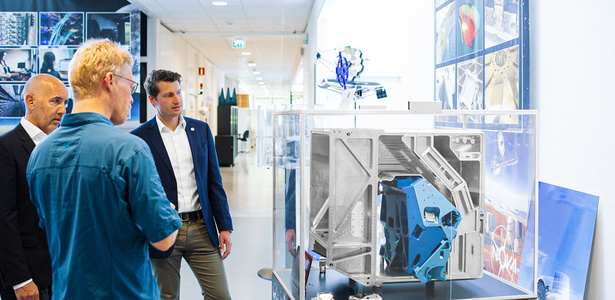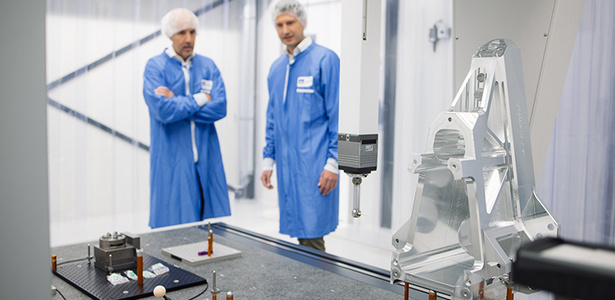NOVA is leading an international consortium that is building one of the first instruments to be attached to this telescope. Manufacturing these massive astronomical instruments requires fabricating large aluminum parts with extraordinary micron-scale precision. NOVA quickly discovered that their existing milling machine was no longer adequate to meet these requirements. "The components we had been producing were quite a bit smaller than the instruments we needed to make for the ELT. For this reason, we needed a larger milling machine," explains Niels Tromp, System Engineer at NOVA.
The tender - research and evaluation of options
Because Nova is a government-funded facility, the company was bound by the bidding process for the new machine. "One of our main requirements was to produce components with the same tolerance as before, in the range of 10 to 20 microns, and over a distance of more than one meter," emphasizes Niels Tromp, System Engineer at NOVA. Following the call for tenders, NOVA first gathered information about the available options. After extensive evaluation, four manufacturers were shortlisted. In further selection processes, it gradually became clear that only one supplier met all the requirements set by NOVA. In the end, the choice fell on the G750 from GROB. The G750 is a powerful milling machining center known for high precision and efficiency. It offers the stability and accuracy required to produce the complex parts for the astronomical instruments of the Extremely Large Telescope. But it was not only the hardware from GROB that convinced, but also the flexibility with the wishes and requirements of NOVA.
Optimum integration into the manufacturing process
To minimize potential risks, the machine was housed in a facility with very stable temperature control. Thermal expansion can affect the production process, so it was important to create an environment that would allow precise machining of components. In addition, the G750 was combined with a state-of-the-art coordinate measuring machine placed in an ISO Class 6 clean room environment. This combination allowed NOVA to measure and assemble the high-precision components produced on the universal machine. The facility housing the milling machine is unique and allows NOVA to internally control the entire design and manufacturing process. "Without this facility, building the instrument for the largest telescope in the world would not have been possible," emphasizes Thomas Wijnen, Instrumentation Coordinator at NOVA. The integration of the G750 into NOVA's manufacturing process has brought significant advantages. NOVA's monolithic design philosophy, which minimizes the number of interfaces and combines many individual components into a single part, has helped reduce alignment and tolerance problems. The milling machine allows NOVA to manufacture components with exceptional precision, which has been critical in building the astronomical instruments.
Enthusiasm continues at NOVA
NOVA's facility, which includes the G750, has demonstrated that it is not only suitable for the astronomical field, but also for the high-precision industry in Europe and beyond. By internally controlling the entire design and manufacturing process, many risks can be minimized, resulting in increased efficiency and quality of manufactured parts. Thus, GROB's G750 has proven to be an important part of NOVA's manufacturing chain. "I can safely say that GROB's G750 has more than met our expectations and that the components we are now producing fully meet the specifications and sometimes even exceed what we expected from the manufacturing process," concludes Thomas Wijnen, Instrumentation Coordinator at NOVA.
G750 - 5-axis universal machining center
With the G750 5-axis universal machine, industrial manufacturing customers achieve first-class results in milling large workpieces. With working paths of 1,000mm in the X-axis, 1,100mm in the Y-axis and 1,175 in the Z-axis, extremely large components can be produced with enormous precision.



